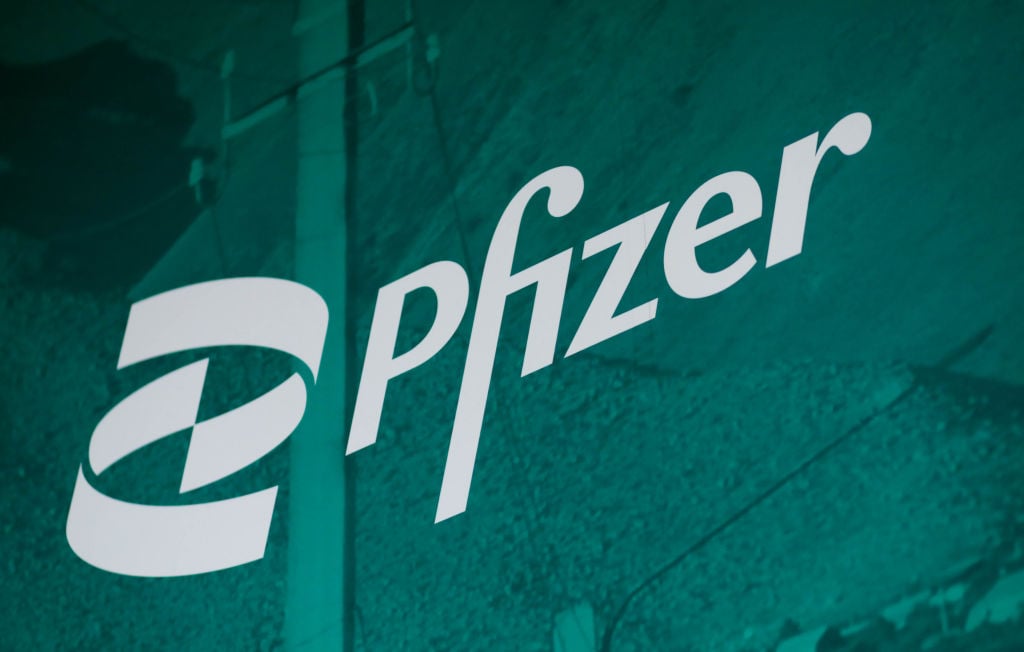Everyone who follows Pfizer (PFE 0.68%) expected that 2019 would be a challenging year for the big drugmaker. And it was. The company's blockbuster nerve-pain drug Lyrica faced generic competition, with sales quickly plummeting. Pfizer's share price fell 10% last year, while the S&P 500 index soared 29%.
Pfizer announced its fourth-quarter results before the market opened on Tuesday. Here are the three most important things to know about the company's Q4 update.

Image source: Getty Images.
1. Overall revenue declined, but there are some bright spots
Pfizer's revenue in the fourth quarter fell by 9% year over year to $12.7 billion. There was one major culprit behind the decline: Sales for Lyrica plunged 67%, from $1.32 billion in the prior-year period to $433 million in the fourth quarter of 2019. Pfizer also reported sales declines for several other drugs, most notably Enbrel, which saw sales fall 21% year over year to $414 million.
But there were some bright spots with Pfizer's Q4 revenue. It topped the consensus analysts' estimate of $12.6 billion. And while overall revenue fell, sales for Pfizer's biopharma segment increased by 7% on a reported basis and 9% operationally to over $10.5 billion.
Sales for the company's top-selling product, pneumococcal vaccine Prevnar 13, rose 4% year over year to $1.58 billion. The most impressive growth, though, came from rare-disease drug Vyndaqel, with sales skyrocketing from $39 million in the prior-year period to $213 million in Q4. Pfizer's top blockbusters also delivered strong growth. Sales for blood thinner Eliquis soared 21% to nearly $1.1 billion, with sales for breast cancer drug Ibrance jumping 13% to $1.28 billion.
2. Earnings were a little below expectations
With Pfizer's revenue sliding, it came as no surprise that earnings would fall as well. Pfizer reported a net loss of $337 million, or $0.06 per share, based on generally accepted accounting principles (GAAP). The company posted a GAAP net loss of $394 million, or $0.07 per share, in the prior-year period.
Pfizer announced adjusted income of $3.1 billion, or $0.55 per share. This was well below the adjusted income of $3.75 billion, or $0.63 per share, posted in the same period in 2018.
CFO Frank D'Amelio said that full-year results for 2019 "met or exceeded all components of our financial guidance." He was right. However, the company didn't quite meet Wall Street's expectations of adjusted earnings per share of $0.57.
3. Complicated guidance
Pfizer provided three different outlooks for full-year 2020. Why such complicated guidance? The company plans to spin off its Upjohn unit and merge it with Mylan. Because of this pending transaction, Pfizer gave full-year 2020 guidance for the full company as it stands now, for the "new" Pfizer that will remain after the deal is finalized, and for Upjohn by itself.
For the full company, Pfizer projects full-year 2020 revenue will be between $48.5 billion and $50.5 billion with adjusted diluted EPS of $2.82 to $2.92. This guidance reflects low single-digit percentage declines on both the top and bottom lines.
The picture looks much better for the "new" Pfizer that will emerge after Upjohn is spun off. It expects full-year revenue between $40.7 billion and $42.3 billion for the new company, reflecting 8% year-over-year operational growth at the midpoint of the range. Adjusted diluted EPS is projected to come in between $2.25 and $2.35.
Pfizer expects that full-year 2020 revenue for Upjohn will be between $8 billion and $8.5 billion. The midpoint of this range reflects a 23% year-over-year operational decline. Pfizer didn't provide adjusted EPS guidance for Upjohn, but the company projects that Upjohn's adjusted EBITDA for full-year 2020 will fall between $3.8 billion and $4.2 billion.
Looking ahead
As is the case with any pharmaceutical stock, Pfizer's future rests on its pipeline. The company has several important milestones on the way this year for investors to watch.
CEO Albert Bourla said that the company expects to report pivotal top-line results in the first half of 2020 for abrocitinib in treating atopic dermatitis, for three late-stage studies of 20-valent pneumococcal conjugate vaccine PF-06482077, and for Xeljanz in treating ankylosing spondylitis. Even more late-stage results should be on the way in the second half of the year, as well as results from earlier-stage clinical studies throughout 2020.
Bourla also said: "2020 is expected to be an exciting year for Pfizer with the close of the Upjohn-Mylan transaction anticipated by midyear, leaving New Pfizer positioned to deliver revenue and adjusted diluted EPS growth that is expected to be among the industry leaders. New Pfizer will be a smaller, science-based company with a singular focus on innovation, while also continuing to allocate significant capital directly to shareholders, primarily through dividends."
Current shareholders will probably like the prospects of stronger revenue and earnings growth. But they'll especially like that the company intends to keep the solid dividends flowing.






